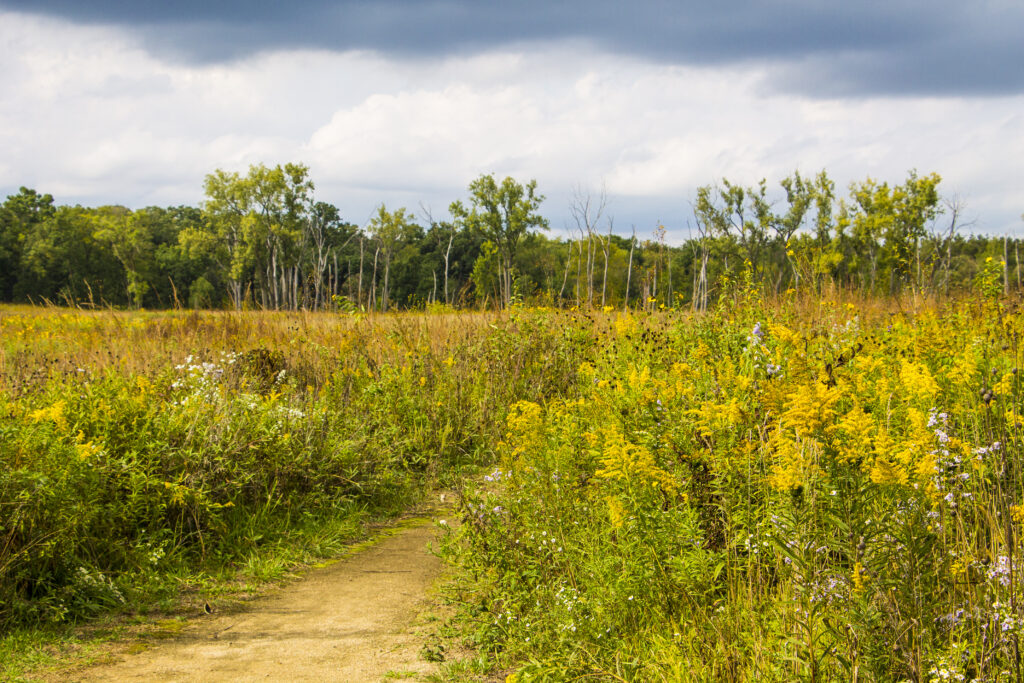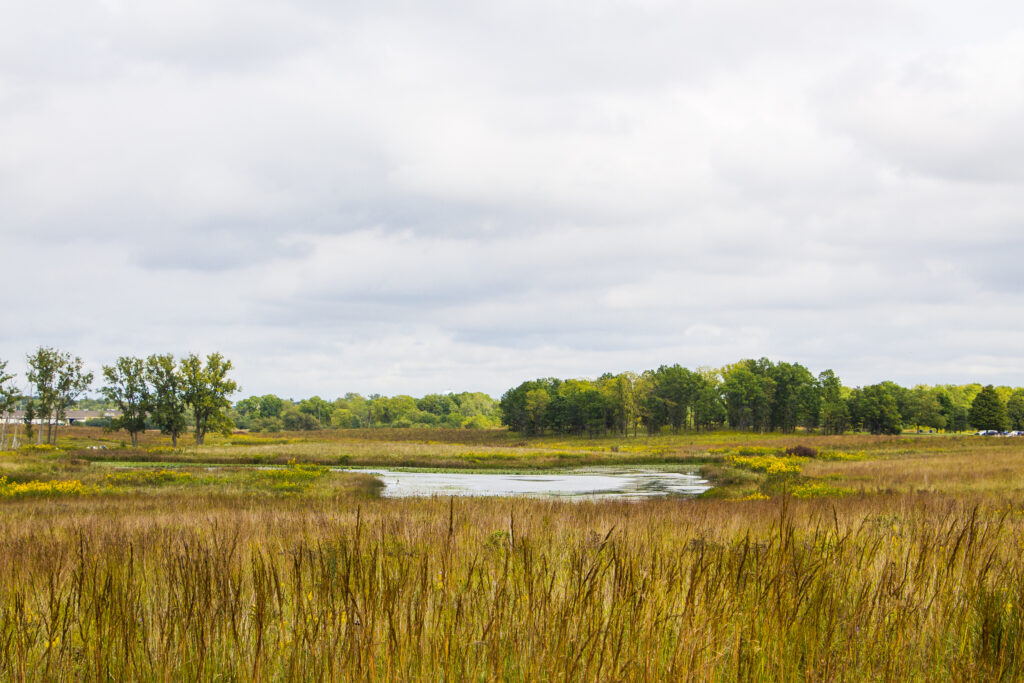Around 14 years ago, a lone gray wolf crossed the border from Oregon into California, marking the start of a slow return of the iconic, endangered predator to the Golden State, where it had been fully eradicated in the 1920s. Today, at least 50 wolves live in 10 packs across California.
But at the end of October, this resettlement, which scientists say can support healthy ecosystems, faced a major setback. Following an “unprecedented level of livestock attacks” across the Sierra Valley, California wildlife officials decided to euthanize four wolves from the pack that was mostly responsible for the killings. The decision came after months of intensive, mostly unsuccessful, non-lethal management efforts.
“This decision was not made lightly nor was it easy,” Charlton H. Bonham, the director of the California Department of Fish and Wildlife (CDFW), said in a statement. “The situation with this pack is far outside any comparable experience across the state or the West, making the long-term recovery of gray wolves much harder.”
The situation comes at a tense time for wolf conservation in the United States, as my colleague Jake Bolster and I reported at the end of September. Gray wolves are still listed under federal law as endangered or threatened in the majority of states, including California. However, a recent push from ranchers and politicians in Western states could change that, especially as tensions rise around livestock attacks, experts say.
Cattle Conflict: As wolf populations have grown in California over the past decade, conservationists have heralded the animals’ return as a win for the broader ecosystem. Wolves are apex predators, which means they can help balance food webs by controlling prey such as deer and elk.
However, ranchers were more wary because wildlife isn’t the only thing wolves may eat; the animals also target cattle when other food isn’t available. In a state with around 5 million cattle that graze on millions of acres of rangeland, almost every wolf pack overlaps to some degree with an agricultural area with livestock.
“In these areas, wolves, bears and mountain lions navigate a patchwork of farms, suburbs and highways, where they encounter more livestock, pets and people — and often, fewer of their natural prey,” wolf experts Arthur Middleton, Justin Brashares and Kaggie Orrick wrote in a recent op-ed for The New York Times. These scientists are part of the University of California, Berkeley’s California Wolf Project, which works with the state government to advance science and management of gray wolves in California.
“The resulting conflicts pose challenges that the current way of doing conservation isn’t well equipped to handle,” they wrote.
The latest situation in California is a stark example. Over the past seven months, a group of wolves known as the Beyem Seyo pack was responsible for at least 87 total livestock deaths across the Sierra Valley—a staggering number of kills in this timeframe, scientists say. For context, this single wolf pack killed more livestock in one valley than wolves across the entire state of Oregon did last year, reports indicate.
Oregon has more than double the number of these predators as California, National Geographic reports.
When the losses first started adding up, CDFW launched a labor- and resource-intensive plan to stop the wolves. They tried drones, non-lethal bean bags, all-terrain vehicles, diversionary feeding, a “fladry” visual-barrier installation and staff in the field around the clock.
Despite these efforts, the cattle attacks continued, and ranchers lamented the financial and emotional toll. Officials eventually determined that these wolves became habituated to cattle as a primary food source, and that their behavior could threaten the agricultural industry and wolf recovery in the region, particularly because the pack may teach it to future generations.
In coordination with the U.S. Fish and Wildlife Service, the agency then killed four members of the pack. One of the wolves was a juvenile mistakenly targeted because officials thought it was a breeding male with a similar appearance. Officials say they are continuing operations to “safely capture and relocate the outstanding juveniles to wildlife facilities” to prevent the animals from teaching other wolves in the area their behavior.
In their recent op-ed, the scientists from the California Wolf Project stressed the importance of working with private landowners to minimize conflict and tackling the root cause of why wolves across the country target cattle in the first place.
“As ecologists, we see the loss of habitat for wild prey as a major, underappreciated contributor to livestock kills,” the scientists wrote. “A wolf, bear or mountain lion that cannot find an elk or deer to eat will simply try harder to hunt the next available cow. In Northern California, the solution is to restore degraded forest and grassland habitat for prey; in the Northern Rockies, it is to protect habitat from development to avoid a spiral into ever-greater conflict.”
A National Debate: The situation in California comes at a powder-keg moment for the politics surrounding wolves in the U.S. California has relatively few wolves compared to other states across the Midwest and Mountain West, where populations number from the hundreds to thousands, and debates over how to manage the predator abound.
“The use of lethal removal in California will be debated, just as it has been in wolf management over the extraordinary and ongoing three-decade recovery of the species across the American West,” UC Berkeley’s Orrick told SFGate. “Lethal removal highlights a long-standing tension in wildlife conservation between valuing the rights of individual animals and prioritizing the long-term health of populations.”
In the Northern Rocky Mountain region—which spans Idaho, Montana and Wyoming—the wolves are not classified as endangered, and states have taken more aggressive measures to manage populations by increasing the number of wolves that can be hunted and trapped. But in August, a federal judge from the U.S. District Court in Montana ordered the U.S. Fish and Wildlife Service to revisit its 2024 decision to keep Northern Rocky Mountain gray wolves off the federal endangered species list and under the management of those three states.
My colleague Jake and I interviewed a number of scientists, ranch industry representatives and environmental nonprofits about this ruling. The main consensus? There is none. Opinions ran the gamut—conservationists and some scientists praised the decision, while members of local nonprofits doubled down, saying that management decisions should remain in state hands.
These reactions were unsurprising given that wolves have oscillated on and off the endangered species list since 1995, and consistently been the subject of polarizing arguments across the U.S. for decades. But things have heated up in recent months. U.S. Rep. Lauren Boebert (R-Colo.) introduced a bill in March to delist the gray wolf from all lower 48 states, and the Trump administration has announced a number of executive actions that could undermine the Endangered Species Act as a whole.
I asked Jill Eileen Richardson, a sociologist at Washington University in St. Louis who studied humans’ relationship with wolves in the Northern Rocky Mountains, what the situation in California could mean for the national debate over wolf management. Her guess: “Politically, it’s just going to be more of the same.”
“Both sides are playing off of each other, so this is going to galvanize the side that doesn’t want the wolves,” she added.
But she and others have also noted the different contexts and politics playing out in each state. In California, wolves are protected under both state and federal endangered species laws, and euthanization is permitted only under strict conditions.
CDFW said in a statement to Inside Climate News that the agency is “deeply committed to ensuring positive outcomes for all species of plants and animals across California.”
“Wolves are here in California and that is an amazing ecological return. Yet, their reemergence is a significant, disruptive change for rural communities,” CDFW’s Bonham said in a separate statement. “Wolves are one of the state’s most iconic species and coexistence is our collective future but that comes with tremendous responsibility and sometimes hard decisions.”
Trump 2.0 Environmental Case Scorecard
From the day he began his second term in January 2025, President Donald Trump and his administration have embarked on an unprecedented effort to upend U.S. environmental protection law and end policy to address the climate crisis. But advocates and states that favor action mounted an immediate counter-offensive in the courts.
Inside Climate News is watching the progress of federal court cases on Trump climate and environmental policy—both challenges to and cases launched by the administration. Today, we launched a new, updating tool created by my colleagues Peter Aldhous and Marianne Lavelle that will track these cases as they make their way through the legal system so that readers can watch this progress as well.
You can access the tool here. Read more about how federal courts have reacted so far to the Trump administration’s actions on the environment in Marianne’s latest story.
More Top Climate News
The death toll from Hurricane Melissa has risen to at least 67, and damages are adding up to tens of billions of dollars across the Caribbean so far, David K. Li and Anthony Cusumano report for NBC News. Survivors in Jamaica are starting to return home, but many of their houses are in shambles and without power. The U.S. has pledged at least $11 million to support recovery on the island, though this number pales in comparison to what the region will need to rebuild. United Nations Secretary-General António Guterres urged countries to also contribute funds, stating that “international support is crucial.”
Delegates from countries will converge next week at the global climate conference, COP30, in Brazil, but the Trump administration confirmed that no high-level representatives from the U.S. will attend. However, a delegation of U.S. governors, members of Congress, mayors, nonprofit representatives and activists is set to join, sending “the message that subnational American jurisdictions are still pressing ahead with climate action,” Oliver Milman writes for The Guardian. My colleague Bob Berwyn will be there to cover the conference, so keep an eye out for his stories.
In just two months during 2022, a glacier in Antarctica retreated at a rate nearly 10 times faster than previously measured for a grounded glacier, according to a new study. Usually, glaciers on land retreat less than 1,000 feet annually, but this particularly icy formation melted by nearly half a mile per day at certain points in the face of warming temperatures, Julia Jacobo reports for ABC News. As temperatures in the region rise due to climate change, this rapid retreat is expected to occur more frequently, the study says.
Bonus: For those of you who celebrated Halloween, The Associated Press’ Kiki Sideris gave a few ways you can give your pumpkin another life—from cooking the seeds or throwing the skin into a stew to donating them to a farm.
Postcard From … Illinois



For this installment of “Postcards From,” Today’s Climate reader Claudia Latapi shared photos from a tour with the nonprofit Openlands, her employer, and the Forest Preserves of Cook County in September. The groups were celebrating wetland and prairie restoration at Deer Grove.
“It was a beautiful and sunny day to be out in the prairies and enjoy nature!” she wrote.
About This Story
Perhaps you noticed: This story, like all the news we publish, is free to read. That’s because Inside Climate News is a 501c3 nonprofit organization. We do not charge a subscription fee, lock our news behind a paywall, or clutter our website with ads. We make our news on climate and the environment freely available to you and anyone who wants it.
That’s not all. We also share our news for free with scores of other media organizations around the country. Many of them can’t afford to do environmental journalism of their own. We’ve built bureaus from coast to coast to report local stories, collaborate with local newsrooms and co-publish articles so that this vital work is shared as widely as possible.
Two of us launched ICN in 2007. Six years later we earned a Pulitzer Prize for National Reporting, and now we run the oldest and largest dedicated climate newsroom in the nation. We tell the story in all its complexity. We hold polluters accountable. We expose environmental injustice. We debunk misinformation. We scrutinize solutions and inspire action.
Donations from readers like you fund every aspect of what we do. If you don’t already, will you support our ongoing work, our reporting on the biggest crisis facing our planet, and help us reach even more readers in more places?
Please take a moment to make a tax-deductible donation. Every one of them makes a difference.
Thank you,
Great Job By Kiley Price & the Team @ Inside Climate News Source link for sharing this story.




